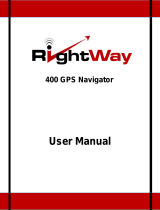VOICE CONTROL
}}
21
Voice command examples
Press , say "Call"-"[First-name]"-"[Last-
name]"-"[number category]" to call a contact
in your phonebook if the person has more than
one phone number listed (i.e., home, mobile, work,
etc.).
For example, press
and say
"Call"-"Robin"-"Smith"-"mobile".
Commands/phrases
The following commands can always be used:
•
Repeat: the system will repeat the most
recent voice instruction.
•
Cancel: cancel the dialog.
•
Help: Initiates a help dialog. The system will
provide several alternative commands that
can be used in a given situation.
The commands for specific situations are descri-
bed in the respective articles such as "Cell phone
commands", etc.
Numbers
Numbers can be spoken in different ways
depending on the context and function being
used:
•
Phone numbers and zip codes should be
spoken individually, number by number, e.g.,
five five five one two three four (5551234).
•
Addresses (house numbers) can be spo-
ken individually or as a group, e.g., two two or
twenty-two (22). It is also possible to say a
sequence of numbers, e.g., twenty-two
twenty-two (22 22) and "double" or "triple"
can also be used, e.g., double zero (00) or tri-
ple zero (000). Numbers in the range
0-2300 can be used.
•
Frequencies can be spoken ninety-eight
point eight (98.8), one hundred four point
two (104.2) or hundred four point two
(104.2).
Related information
•
Voice control (p. 20)
Navigation system voice commands
Many of the navigation system's functions can
be activated using voice commands.
The procedure for using voice control is descri-
bed in greater detail in the articles "Voice con-
trol," "Using voice control" and "Voice control
settings."
Voice commands
The following list contains examples of com-
mands that are unique to navigation system.
To use the voice control system, press the
on the right-side steering wheel keypad and say
one of the following commands after the tone:
•
"
Navigation: Starts a navigation voice com-
mand dialog and displays available com-
mands.
•
"
Take me home: Guidance will be given to
the location set as Home.
•
"
Go to [City]: Enter a city as a destination,
e.g., "Go to New York."
•
"
Go to [Address]: Enter an address as a
destination, e.g., Go to 125 43 St., New
York."
•
"
Go to Intersection": Enter an intersection
as a destination. The search for the intersec-
tion will be done within the specified area.
•
"
Go to [Zip code]: Enter a zip code as a
destination, e.g., "Go to 07405."





















